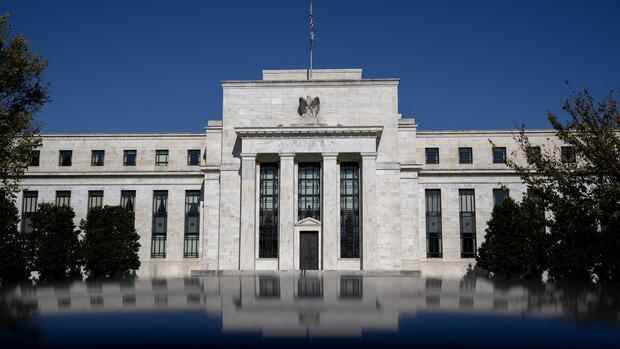New York, Düsseldorf The US Federal Reserve (Fed) is starting its monetary policy turn: from the end of this month, it will reduce its bond purchases by 15 billion dollars a month. The Fed announced this on Wednesday evening. The move was made “in view of the considerable further progress that business has made towards the Committee’s objectives since last December”.
The markets took the news with relief. After the US stock exchanges had lost slightly before the Fed’s decision, they gained in the New York afternoon, the S&P 500 and Nasdaq even reached record highs. Liz Young, Sofi’s investment strategist, explained that market participants had become more and more hawks in the past few weeks – advocates of a stricter monetary policy.
The Fed is currently buying $ 120 billion a month, mostly government bonds and mortgage-backed securities. With the program, the Fed is pumping additional money into the financial markets to keep lending rates low and stimulate the economy. The purchases began at the start of the corona crisis and pushed the Fed’s balance sheet to a record $ 8.5 trillion.
These purchases will now be reduced during the month. Treasury bond purchases will be cut by $ 10 billion and mortgage-backed securities will be cut by $ 5 billion. The US Federal Reserve did not give an exact date.
Top jobs of the day
Find the best jobs now and
be notified by email.
The decision was expected by most analysts and economists and was well received by investors. The Vix volatility index, which measures investor nervousness on Wall Street, fell three percent. Shortly before the Fed’s decision was announced, it was still one percent up.
In the bond market, the yield on ten-year US government bonds rose slightly to 1.589 percent. The dollar, on the other hand, increased its losses against the euro slightly.
If the Fed were to reduce its bond purchases further at this rate, they would end in June 2022. “This schedule would give the Fed the opportunity to take a tightening break in the coming summer and then turn the interest rate screw for the first time in the fall,” said portfolio manager Thomas Altmann of QC Partners.
However, reducing bond purchases (tapering) is only the first step in the turnaround in monetary policy. The second would be to raise key interest rates. These are currently in the extremely low range of 0.0 to 0.25 percent.
Experts and investors currently have different opinions on how quickly interest rate cuts will continue. Recently, inflation expectations have risen significantly. As a result, some investors are speculating that the Fed will react more quickly.
However, Powell made it clear again this time that he continues to believe that inflation is temporary. During the press conference, Powell said he expected inflation to fall again in the second or third quarter of next year. “We are looking at this closely and will change our policy accordingly,” he said.
Powell stressed that it was clear to him that the Fed was responsible not only for the labor market, but also for price stability. He also knows that it is difficult for people who live from paycheck to paycheck when gasoline or heating become more expensive. But he also made it clear: “We don’t think it’s a good time to raise interest rates.” The labor market should first continue to recover.
Investment strategist Young therefore doubts that the Fed will raise rates before September. “You will want to keep tapering and rate hikes separate,” she said.
Marc Chandler, chief investment strategist at Banockburn Global Forex, wrote with the short message service Twitter: Powell “seems to recognize the persistence of high prices, but still sees the causes as temporary”.
https://www.youtube.com/watch?v=Nd40XFQwG3o
Fitch economist Tej Parikh said: “Given the supply shortages that are still driving prices and the pressure on wages due to labor shortages, the Fed will monitor price developments closely for signals that inflation is after all more permanent and more fundamental could turn out. “
However, the monetary policy turnaround is not going fast enough for former Fed member Robert Heller. “They are finally starting, that was long due,” said Heller to the business broadcaster CNBC. “I’m glad you did what you did.” But that’s not enough to curb inflation. “The Fed is still on the gas and that’s not good in this booming economy.”
Heller does not agree with the interpretation of some observers that the Fed is now becoming a hawk: “They are not hawks. This is a pigeon that is finally trying to move its wings a little. “
With material from dpa and Reuters.
More: Inflation is rising, but interest rates are not for the time being – the ECB is sticking to its expansive monetary policy

